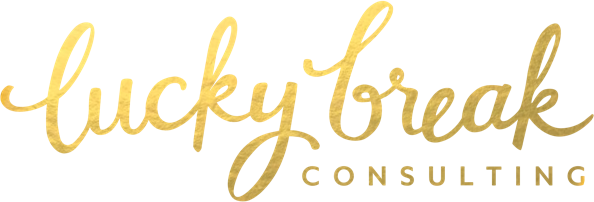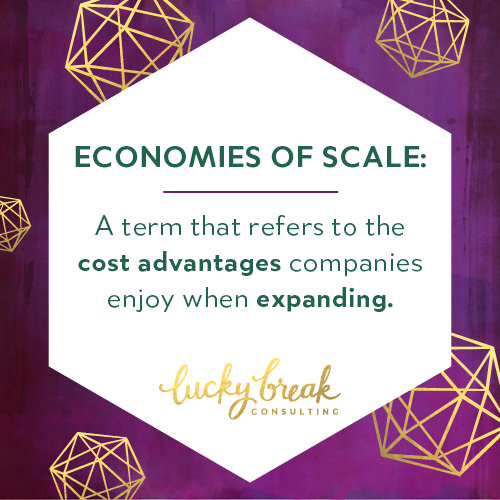I’ve fielded this question not once, but twice, in the past few days, so I’m taking that as a cue from the Universe that you, too, might be mulling over how to calculate volume discounts. Here’s my take.
50% is the customary and expected wholesale pricing structure. When an account orders in a quantity that triggers the economies of scale to work in my favor, then I share some of those savings with the account in the form of preferential pricing.
For example: if an order is substantial enough to help me procure raw materials in larger quantities at better pricing or enables me to buy a new piece of equipment to increase efficiency, then I start revisiting that pricing structure. When I save, they save and we all win. But volume discounts just because they asked? That’s a losing proposition. You can’t consistently erode profit margins to please others and expect to build sustainable businesses.
I just-so-happen to have designed some of the coolest product pricing software on the planet. And one of the things that I love most about it is the ability to watch the economies of scale in action and understand how they affect the costs of production. But let’s back up for just a second… what exactly are the economies of scale?
Economies Of Scale is a term that refers to the cost advantages companies enjoy when expanding. For example: If a spa orders 10 sugar scrubs from your bath and body company, you’ll probably fill that order by purchasing a 5lb. bag of sugar from your local grocery costing $4 (or $.80 per pound). However, if you receive an order for 100 sugar scrubs, you’re more likely to purchase that sugar in a 25lb. bag at a restaurant supply company at a cost of $14 (or $.56 per pound), thus saving $.24 per pound of sugar.
In another example, let’s assume your company manufacturers wooden furniture for children and you rent a workshop at a cost of $500 per month. If one person working 40 hours a week can produce 10 pieces of furniture each month, then each of those ten pieces of furniture “costs” the company the equivalent of $50 in rent. However, if orders increase enough to justify two workers working 40 hours a week to produce 20 pieces of furniture per month, then the rent expenses associated with a single piece of furniture are reduced by half, to just $25 per piece. Viola! That’s the magic of the economies of scale.
So, back to that software…one of the most beautiful things about my Price-O-Matic product pricing system is that it enables you to add inventory and “build” products within the system. It saves those products and automatically tallies the costs of your overhead, supplies and labor to arrive at a pretty comprehensive peek at the costs of production. You can build a batch of 100 letterpress cards and then switch that over to a batch of 500 letterpress cards, having only invested a few minutes of your time and a series of clicks. The software reconfigures all the math and lets you see the economies of scale in action, so you understand how they affect your production. No more blind stabs in the dark. No, no, no… now you’re empowered to assert price proposals with mad confidence in mere minutes. Three cheers for technology, eh?
And, if you’re absolutely committed to simply offering buyers 5 or 10 or 20% off of X quantity just because they asked, well, then Price-O-Matic has a section where you can enter various quantities and proposed discounts and it will do that math for you, too. I recommend establishing a minimum “floor” of profitability (say, 3x your costs of production or 225% over your costs of production) and the POM system will color-code the results of all that random discounting for you, enabling you to see- in the veritable blink of an eye- when you’re easily exceeding that profit minimum, when you’re cutting it really close and when you’re losing your…ummmm… donkey.
If you think Price-O-Matic can help you gain control of your numbers, then feel free to reserve a copy right over here. Have other pricing questions? Drop them in the comments below and I’ll see if I can help!







Hi Lela!
When will you offer Price-O-Matic for MAC PC w/pages?
Thank you!!
Hi Ann,
We have no plans to develop POM for Mac pages; however, we do have plans to pull POM off an Excel engine and evolve it into a cloud-based, independent platform that will function on any machine anywhere on the planet. We have a tentative release planned for later in 2015. Keep your eye tuned to the blog for more details as I can release them. 🙂
I love POM. I have saved myself so much money and made money as a result of POM.
howdy,
this is particularly timely for us, because I have been struggling to stick to our guns (so to speak) about pricing with one particular customer. They want more and more, without paying anything for it. I had to finally cut them off and let them know that we couldn’t offer them discounts below the price I quoted them.
I really look forward to the cloud-based system of POM. I would love for it to be a SAAS model, but that’s probably too much to ask. 🙂
Thanks so much for your gift to the handmade world.
LOVE POM!
Keeping my fingers crossed that a future upgrade would include a place to log the date that something was purchased. For instance, Olive Oil. If I could instantly, in a flash, look at what I purchased it for (last month or… )….over time, the fluctuations may help me to consider another vendor or…..
Hope this makes sense.
But LOVE, LOVE, LOVE POM
Thanks Kiz! So glad POM is resonating with you. We’re taking notes for the next release and I’ve added this to our list!
Do you happen to offer, or know of a priceomatic for services?
Regrettably, I don’t VO!